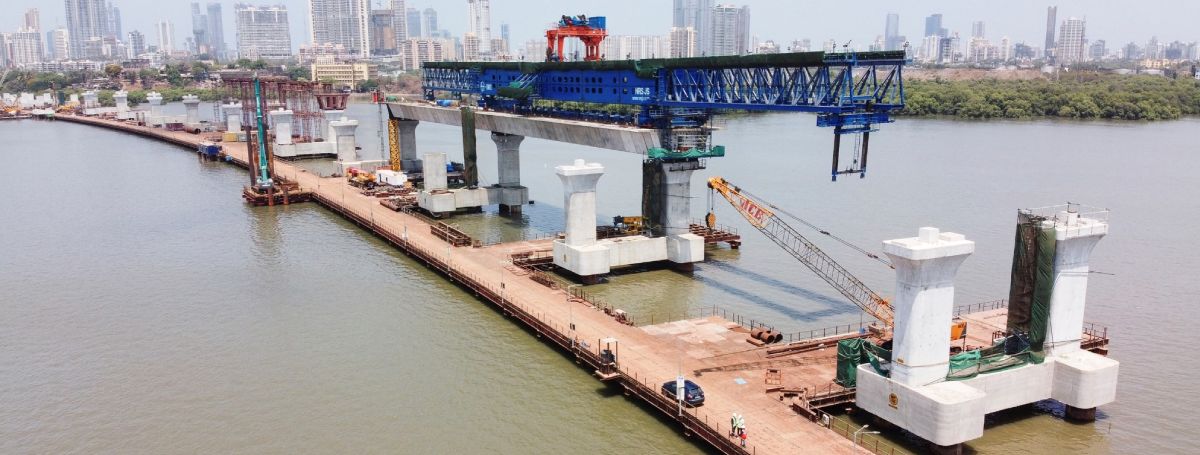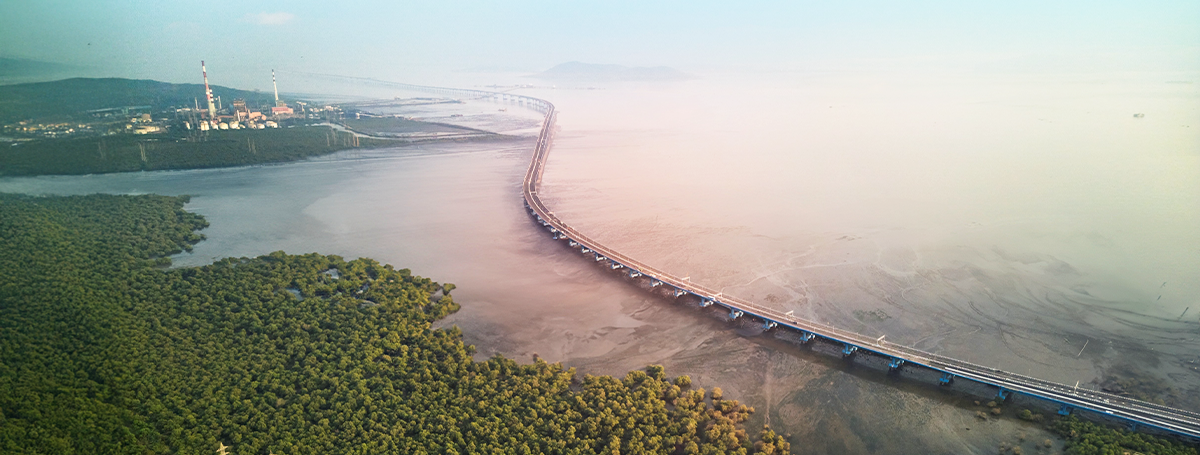L&T Group Websites
- Corporate
- Corporate – Arabic
- CarbonLite Solutions
- GreenTech
- Heavy Engineering
- Hydrocarbon
- LTIMindtree
- L&T Construction
- L&T Construction & Mining Machinery
- L&T Finance
- L&T Howden
- L&T Hydraulics
- L&T Infrastructure Finance Company Limited
- L&T Institute of Project Management
- L&T Technology Services
- L&T Kuwait Construction
- L&T MBDA Missile Systems Limited
- L&T Metro Rail (Hyderabad) Limited
- L&T-MHI Power Boilers
- L&T-MHI Power Turbine Generators
- L&T Precision Engineering and Systems
- L&T Realty
- L&T-Sargent & Lundy Limited
- L&T Semiconductor Technologies Limited
- L&T Special Steels and Heavy Forgings
- L&T-SuFin
- L&T Valves Limited
- Nabha Power Limited
- L&T Public Charitable Trust
- Rubber Processing Machinery
- Shipbuilding
- L&T Skill Trainers Academy
ATAL SETU

The Atal Bihari Vajpayee Sewri-Nhava Sheva Atal Setu (Mumbai Trans Harbour Link), the country’s longest sea bridge is a crucial infrastructure upgrade, enhancing connectivity between key economic zones. The bridge holds immense significance for citizens, offering a substantial reduction in travel time between Mumbai and Navi Mumbai from two hours to just 20 minutes. With its ground-breaking technical features and a focus on speed and scale, the Mumbai Trans Harbour Link stands as a landmark project, a leap of technology and imagination, with sustainability at its heart.
The challenge before L&T, as responsible builders of infrastructure, was to build a ‘green’ bridge deploying the most sustainable methods of construction. Apart from executing in an ecologically sensitive zone, for the Sewri mud flats are earmarked as an Important Birding Area (IBA) and home for a variety of birds including the pink-necked flamingos, our challenge was to build without interfering with the lives of the birds, flora and fauna around, and keeping their habitat pristine.

Drilling softly: By deploying world-class Reverse Circulation Drilling Machines, we managed to keep noise and vibrations to less than 78 dBA. Accoustic enclosures and special mufflers provided for generators reduced noise and carbon emissions, with sound levels maintained at 72 dBA. Several decibel meters installed at site, especially in the marine and intertidal zones, monitored noise levels every fortnight.
Away from the bright lights: Warm-white colour eco-friendly LED lights with 3,000 kelvin temperatures, with an average surface illuminance of 30 lux, ensured that the birds and aquatic life had a peaceful night.
To keep them out of harm’s way: A special sheet barricade was installed to demarcate the construction area from the habitat of the birds and mangroves, that was short enough for the birds to fly over.
Breathing easy: Construction activity normally generates dust and emissions that harm the quality of air – air quality meters, installed at several sensitive locations, monitored air quality. Various dust control measures implemented at the project ensured the air quality was maintained.
Maintaining the ecological balance: We collected and tested samples from two zones – the mudflats / intertidal zones and marine areas – every quarter, to monitor the productivity of the mudflats. Water quality was checked once a quarter on various parameters including pH, DO, floating matter, suspended solids, oil & grease and heavy materials. Geological studies were conducted every quarter to check the soil quality and sedimentation process. Periodic tests monitored the health of the environment.

As nation builders we are proud to have built another landmark of the future, but this time, the 24,000+ flamingos and marine life in the region have cause to thank us too, for keeping sustainability in focus.
Learn more about our Leap for:

